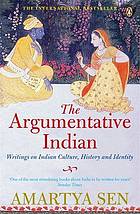https://youtu.be/6CMKh5z1-OA
The Santhals, a proto-Austroloid racial group, is the largest tribe in West Bengal. Although they reside in several districts of West Bengal, Purulia District is one of the major areas where Santhals are found after Paschim Mednipur district.
The primary occupation of Santhals is daily agricultural and manual labour. Santhal religion worships Marang Buru or Bonga as Supreme deity. The art of tribal paintings is transmitted from generation to generation, and is constantly recreated by communities and groups, in response to their environment and their history. It is mostly women who engage in producing these art forms.
Source: National List for Intangible Cultural Heritage (ICH), Ministry of Culture, Government of India
URL: http://www.indiaculture.nic.in/national-list-intangible-cultural-heritage-ich
Date visited: 5 October 2020

“The smart boy or clever girl who is deprived of the opportunity of schooling, or who goes to a school with dismal facilities (not to mention the high incidence of absentee teachers), not only loses the opportunities he or she could have had, but also adds to the massive waste of talent that is a characteristic of the life of our country.” – Nobel Awardee Amartya Sen in The Argumentative Indian (Penguin Books, 2005), p. 344
Tips: Tribal Children’s Right to Education | Find this and other books published in India | Video documentary on the Lifeworld of an Enlightened Villager | Related posts about Childhood | Childrens rights: UNICEF India | Safe search >>
Santal culture: music, video, eBooks and more
Audio | Santali Traditional and Fusion Songs: Ghosaldanga Bishnubati Adibasi Trust – West Bengal
eBook | Background guide for education
eBook | Free catalogue: Banam: One of the ancient musical instruments of the Santals – West Bengal
eBook | Free catalogue: Museum of Santal Culture (Bishnubati) – West Bengal
Education and literacy | Right to education
Infusing the Santhali Element in Schooling by Rina Mukherji
RSV School & Museum of Santal Culture
Santal | Santal Parganas | The Santals by Boro Baski | Santal music
Santals as a community: A brief introduction to their culture and approach to development
Video | Roots and Branches: The Lifeworld of an Enlightened Villager in West Bengal
Video | Santali video album “Ale Ato” (Our Village, Part 1 of 2) – West Bengal
Tips for using interactive maps
Toggle to normal view (from reader view) should the interactive map not be displayed by your tablet, smartphone or pc browser
For details and hyperlinks click on the rectangular button (left on the map’s header)
Scroll and click on one of the markers for information of special interest
Explore India’s tribal cultural heritage with the help of another interactive map >>